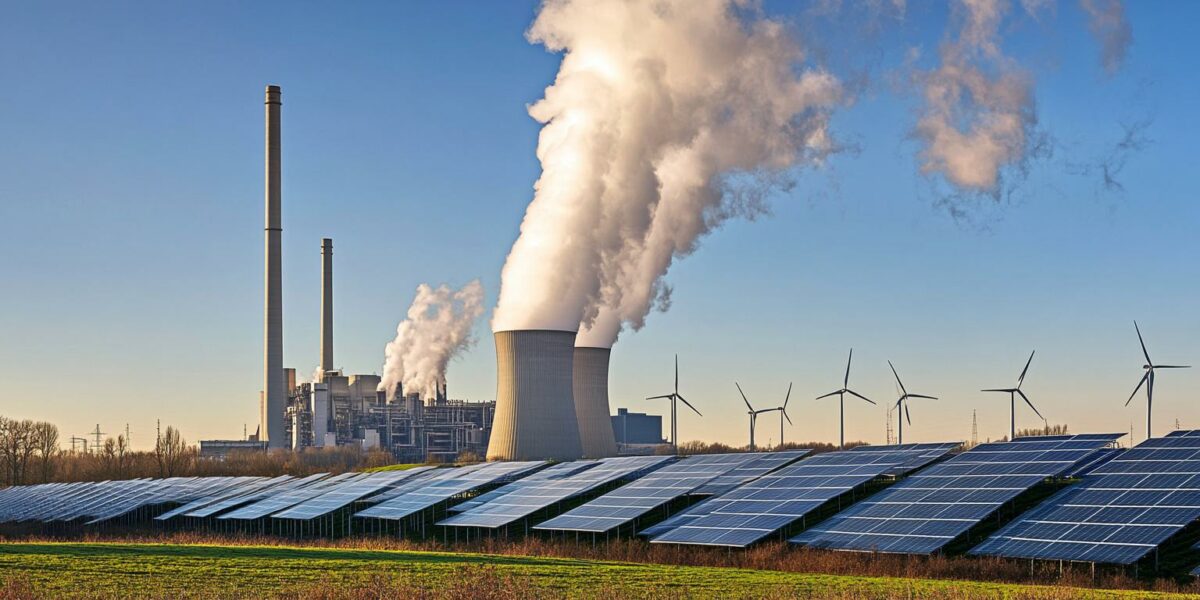Unlocking the Potential of the Inflation Reduction Act (IRA)
As the need to decarbonize becomes increasingly urgent, the Inflation Reduction Act (IRA) offers a tremendous economic boost for the clean energy sector. The timing is critical to adopt new carbon policies to achieve a “cost-optimal” model that aligns with a 1.5°C warming trajectory.
However, a recent Rhodium Group (RHG) report indicates the U.S. is not on track to meet its NDC goal of 50-52% emissions reduction by 2030. RHG projects only a 32-43% reduction, highlighting the need for additional measures.
A new peer-reviewed article suggests that combining carbon policies with IRA incentives could unlock the full potential of these measures. This approach aims to achieve the U.S. NDC’s target of 50-52% economy-wide emission reductions and 80% reductions in the power sector.
The study finds that a carbon cap, when combined with the IRA, significantly reduces the cost of achieving emissions reductions. This combination is nearly 60% cheaper compared to scenarios without the IRA, emphasizing the importance of integrated policies.
Economic and Environmental Benefits
Combining a carbon cap with the IRA also lowers consumer costs. The projections show a decrease to roughly $114/MWh, compared to $117/MWh without these policies. Additionally, this combination yields significant net climate and health benefits due to deeper reductions in fossil fuel pollution.
The U.S. NDC is aligned with COP28 decisions to maintain a 1.5°C warming trajectory. Achieving the NDC would demonstrate global climate leadership, especially given the U.S.’s contribution of about 11% of global emissions.
Federal and state-level policies are accelerating progress towards the goal of 80×30. The IRA and the Infrastructure Investment and Jobs Act (IIJA) have altered the economics of decarbonizing the power sector, paving the way for a cleaner energy pathway.
Key actions include:
- Accelerating the deployment of new clean energy projects
- Phasing out fossil fuel pollution
- Maximizing the impact of uncapped tax credits for clean electricity
Challenges and Projections
Despite these promising developments, model projections show uncertainty in the implementation of the IRA. Factors such as increased demands and varying investment decisions contribute to this uncertainty.
Various models project power sector emissions to fall by 47-83% below 2005 levels by 2030. However, projections still fall short of the 80×30 target, emphasizing the need for additional policies to bridge this gap.
The RFF report recommends combining the IRA with a carbon emissions cap to constrain total carbon dioxide emissions in the power sector. This approach ensures that electric demand is met increasingly by zero-emissions electricity generation.
The RFF analysis demonstrates that both federal and state-level carbon caps can drive significant progress towards meeting the NDC target. These measures are crucial for accelerating the transition to a cleaner energy future.
Key Findings and Recommendations
RFF’s model scenarios highlight several key findings:
1. A nationwide Carbon Emissions Cap can lock in the IRA at no additional cost: Including a carbon emissions cap incentivizes the uptake of IRA measures, accelerating the shift to clean energy and reducing reliance on coal.
2. A Carbon Cap is needed to achieve 80×30: The combination of the IRA and a carbon cap ensures maximum effect and certainty over emissions outcomes, closing the gap to the 80×30 target at a lower cost.
3. The IRA dramatically reduces costs: Reaching 80×30 with the IRA in place is nearly 60% cheaper compared to scenarios without it, highlighting the efficiency of combined policies.
State and company-level actions are also critical. Efforts like the Regional Greenhouse Gas Initiative (RGGI) and company-level plans can further contribute to achieving the NDC target. The transition to clean energy is essential, and additional policies are needed to lock in cost-optimal projections and go beyond them.



Xavier
Gr8 report! But what about the initial costs for consumers? Any subsidies mentioned?
lucas_artemis
LOL, well guess it’s time to invest in clean energy stocks! 🚀
logan
Interesting read, but what about the jobs in fossil fuel industries? How will this transition affect them?
brooklynoasis
How exactly does the carbon cap work in conjunction with the IRA? Can someone explain in simpler terms?
carson1
Finally some good news on climate action! Thanks for sharing this, it’s really encouraging.
Milo
Wow, 60% cheaper with the IRA? That sounds almost too good to be true. What’s the catch?
auroraenigma1
This is incredible news! Does the report outline any specific steps for local governments to take? 🌱